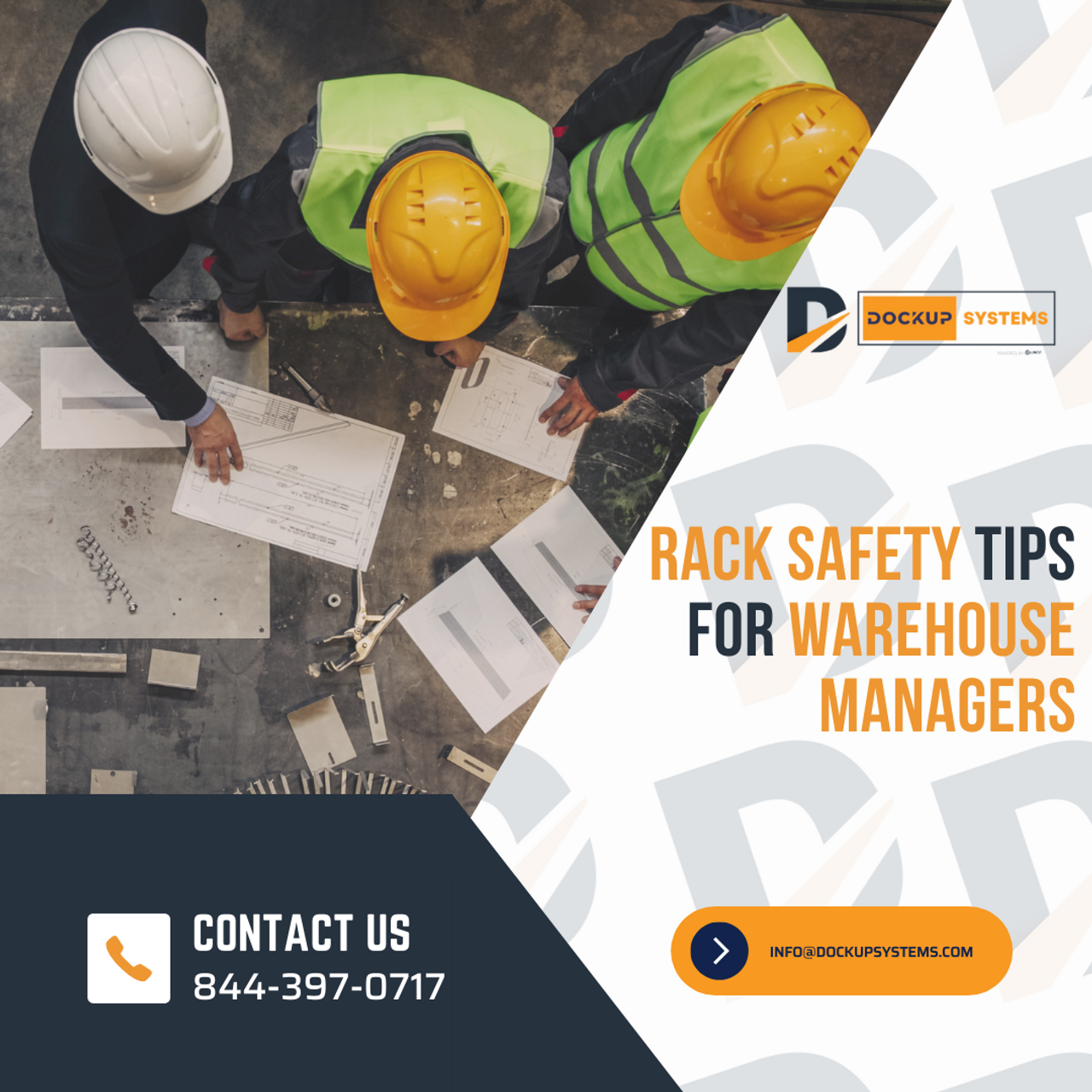In the fast-paced world of manufacturing, warehousing, and distribution, ensuring safety is a top priority. As a warehouse manager, the security of your employees and the protection of your valuable assets — including racks and equipment _ are crucial. In this article, we will provide valuable rack safety tips for warehouse managers to help protect your inventory and employees.
1. Regular Inspections Are Key
Regular inspections are the cornerstone of rack safety in any warehouse. These assessments are vital for identifying potential safety hazards that could compromise both the structural integrity of your pallet racks and the safety of your personnel. To ensure rack safety, make it a routine to inspect your racks regularly. Start by checking for visible signs of damage, such as bent beams, misaligned frames, or loose connections. These issues may not always be apparent at first glance, so it’s crucial to have trained personnel who know what to look for during inspections.
2. Proper Training for Staff
Ensuring pallet rack safety isn’t just about the physical condition of your racks; it involves the knowledge and practices of your warehouse staff. To this end, providing comprehensive training on rack safety protocols is vital. Your warehouse staff should be well-versed in safe loading practices, understanding weight limits, and properly using equipment such as forklifts. Training should emphasize the importance of adhering to weight limits and load distribution guidelines to prevent overloading, which can lead to structural failure and accidents.
3. Weight Limits and Load Distribution
Maintaining rack safety involves strict adherence to weight limits and the even distribution of loads on your pallet racks. Overloading racks is a common cause of structural failure, leading to accidents and damage. To enforce this, implement clear labeling and signage on your racks to indicate their weight capacity. This provides a visual reminder to your team members about the maximum load each rack can safely hold. Strictly enforce compliance with these weight limits to prevent overloading.
4. Rack Protection Systems and Products
Investing in rack protection systems is a proactive measure to enhance warehouse rack safety. These systems include products — such as guardrails, post protectors, and end-of-aisle protectors — that act as a buffer between your racks and potential damage caused by forklifts or other equipment. By strategically placing these safeguards, you significantly reduce the risk of accidental impacts. In the long run, these investments can protect your racks and contribute to the overall safety of your warehouse.
5. Proper Storage Practices
Encouraging proper storage practices among your team members is essential for rack safety. Ensure that your pallets are stacked evenly and securely. Heavier items should be placed on the lower shelves, while lighter objects should go on top. This distribution provides stability and reduces the risk of tipping or collapse. Maintain adequate aisle space to facilitate the safe movement of equipment and personnel. Clear pathways prevent accidents and collisions within the warehouse.
6. Rack Maintenance
Regular maintenance is critical to rack safety. Address any damaged or worn components promptly to ensure the structural integrity of your racks. This includes replacing damaged beams, frames, or connectors. Neglecting even minor issues can escalate into major safety concerns if left unattended.
7. Safety Training Programs
Consider implementing ongoing safety training programs for your warehouse staff. These programs should cover a wide range of safety topics, including rack safety. Regular training helps reinforce safe practices and fosters a culture of safety within your organization, where every team member takes responsibility for maintaining warehouse rack safety.
8. Emergency Procedures
Develop and communicate clear emergency procedures in case of rack failure or accidents. Ensure that all team members are aware of these procedures and understand how to respond quickly and effectively to minimize the risk of injury and damage. Having well-defined emergency protocols can make a significant difference in mitigating the consequences of unforeseen incidents.
9. Rack Safety Audits
Regularly conduct rack safety audits to evaluate the effectiveness of your safety measures. These audits serve as a proactive approach to identifying areas for improvement. By assessing your warehouse’s safety protocols, you can ensure compliance with safety regulations and best practices.
10. Consider LINCO’s Dockup Service
When it comes to ensuring pallet rack safety and optimizing your warehouse’s efficiency, LINCO’s DockUp service is your ideal solution. We offer integrated warehouse solutions designed to enhance the safety and productivity of your warehouse operations.
Wrapping Up
Rack safety is a critical aspect of warehouse management. By following these rack safety tips, regularly inspecting your storage systems, providing proper training, and considering LINCO’s DockUp service, you can create a safer and more productive warehouse environment for your team while protecting your valuable inventory. Don’t wait until an accident happens — prioritize rack safety today!
LINCO’s DockUp service is trusted by businesses, manufacturers, and industrial companies across various industries. With our expertise in rack safety and warehouse optimization, we can help you create a safer and more efficient warehouse environment. Contact LINCO today to learn more about our dockup service and how it can benefit your business.

